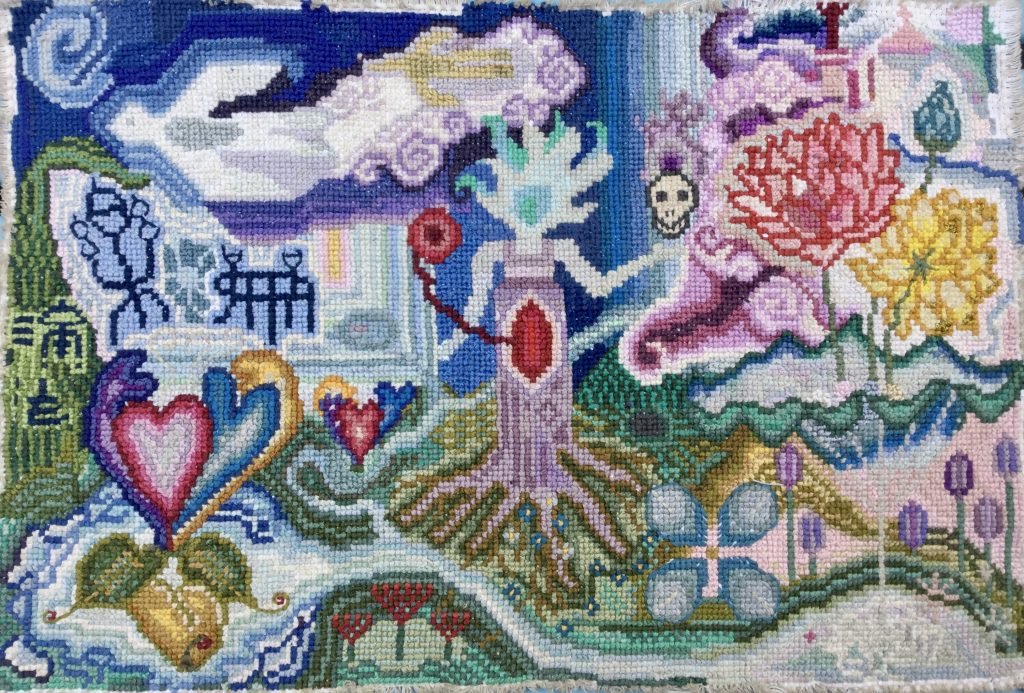The oneiric earth is an exploration of the poetic otherworld as an oneiric dream space with which one merges and is transformed, as well as archetypal subconscious symbols and creatures who may reside there. The ideas were developed during my undergraduate research thesis ‘Joining with the oneiric earth’. They have since developed visually through the medium of cross-stitch embroidery.
In medieval otherworld accounts, characters often must move from the primary world of the narrative into a secondary otherworld by encountering and then moving through elemental boundaries, like bodies of water, forests, areas of dense fog, holes in the earth, or snow storms.
The otherworld is a mysterious zone, a land of the wild and the hidden and that which cannot be understood. It is a land that cannot always be penetrated, that can choose either to reject you or to allow you in, or even to disappear and reappear at will.
This tapestry is the first in a series exploring the literary otherworld as an oneiric dream space with which one merges and is transformed. It is inspired by the Tibetan thangka, which places the bodhisattva at the centre of the image, surrounded by colourful and rich depictions of nature.
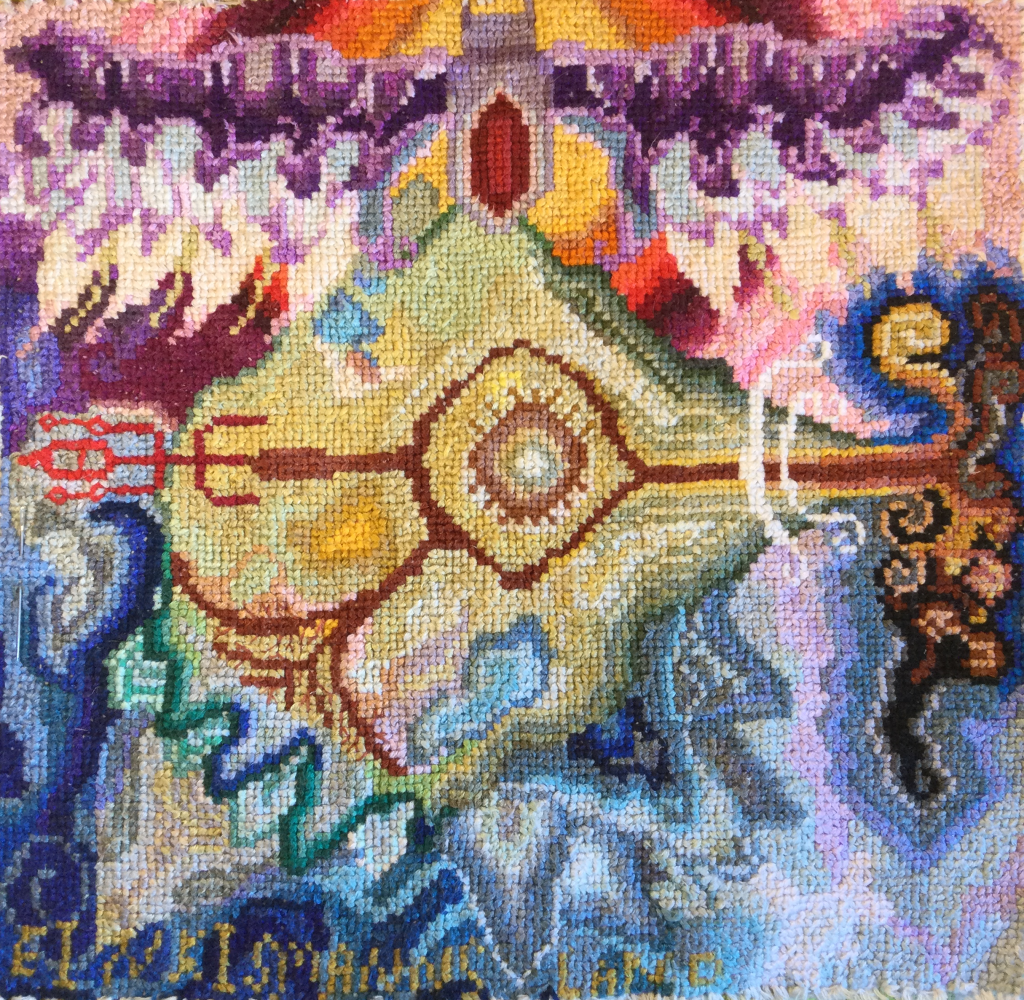
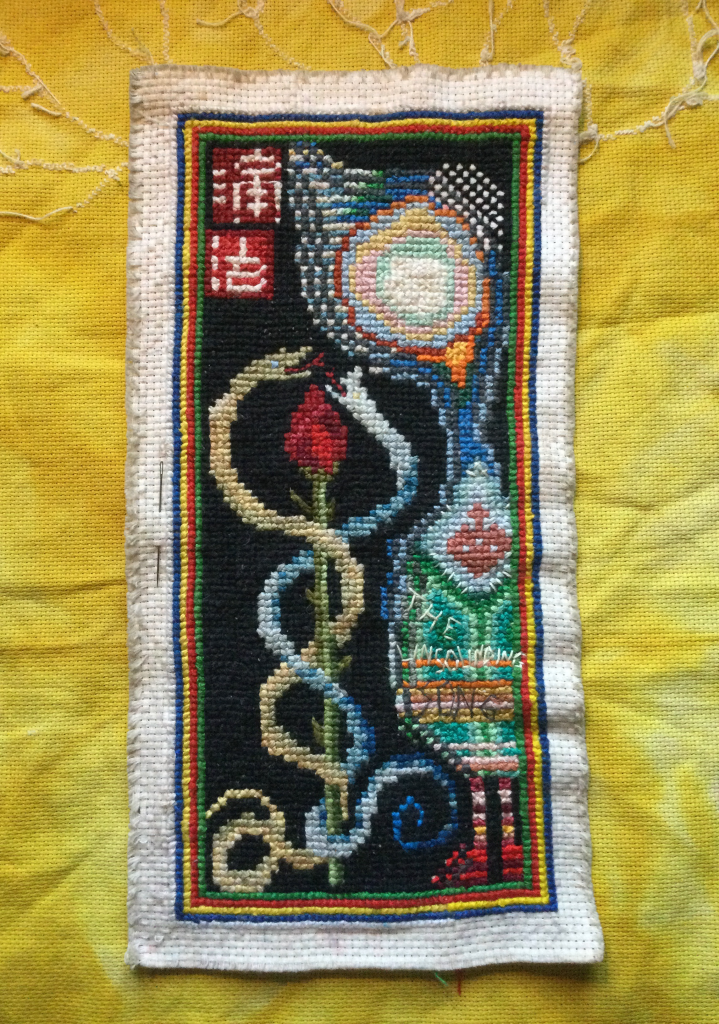
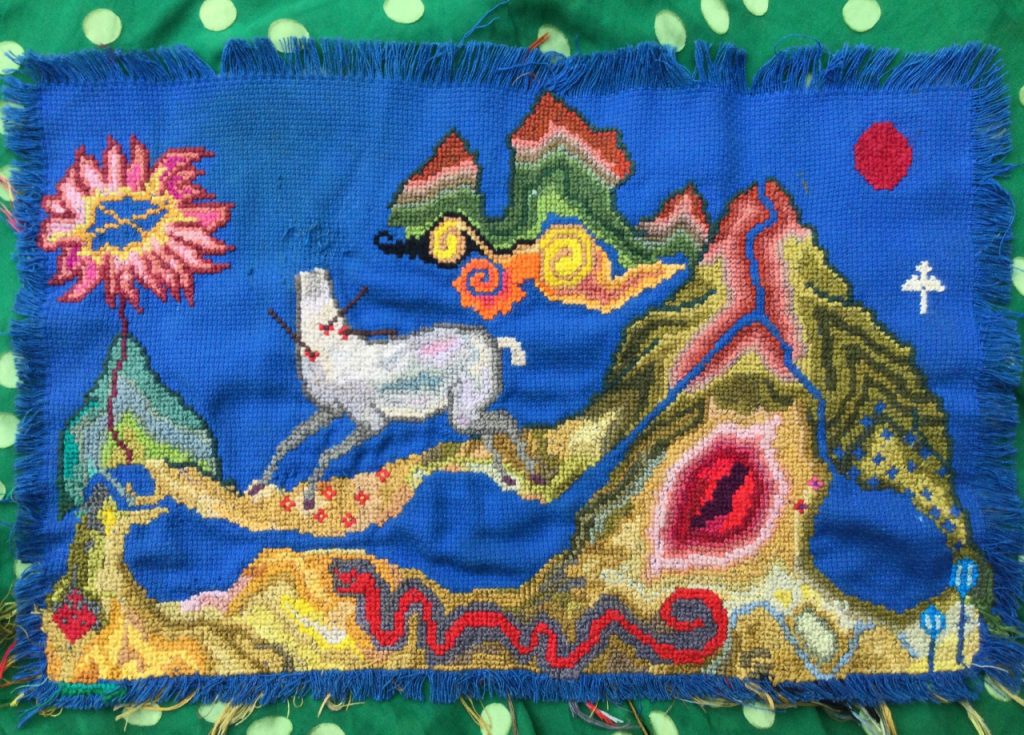
the wounded deer, cross-stitch embroidery, 2022
I began work on this project in March 2020. The first COVID-19 lockdown had just begun, and I was part-way through writing my thesis. My research themes of embodied nature and otherworld spaces found themselves translated through thread. I began depicting and inventing tangible poetic otherworlds, inhabited by strange and otherworldly creatures. The content of this work felt deeply subconscious. The images emerged slowly, each tapestry taking roughly six months to complete.
einkismannsland, cross-stitch embroidery, 2021
My research into otherworld spaces began with reading medieval otherworld accounts, and this work in particular makes reference to those stories, and also to inaccurate yet intricate maps created by medieval artists.
In this tapestry, space is expressed from above, rather than at eye level. The concept was to make a map that can be viewed from any angle to appear upright.
The title, einkismannsland, means No Man’s Land in Icelandic, and comes from an exhibition I saw at @reykjavikartmuseum Hafnarhús in 2018, of artists responding to the Icelandic highlands. My tapestry is also inspired by the highlands; the mountainous, volcanic, glacial landscape in the centre of Iceland, where I witnessed wild and colourful expressions of nature.
the unsounding song, cross-stitch embroidery, 2021
the unsounding song is a feeling in the stomach, hence I have located it in the stomach of the image. On one hand it is a kind of nausea: the haunting pain of inexpression, of not finding the right words, of not being heard, of a narrative preemptively written. This feeling is communicated by the stark lettering against bright colour.
On the other hand the unsounding song is divine, being the fertile first echo or instinctual movement, felt deep within. It is the egg inside the womb, the glimmer of what is to come. Because it is the source of potential it is limitless, it references all possibilities.
The idea of the unsounding song is a two sided coin. In both its positive and negative expression, it always points to the unbearable lightness of potentiality, both of what could have been, and of what is to come.

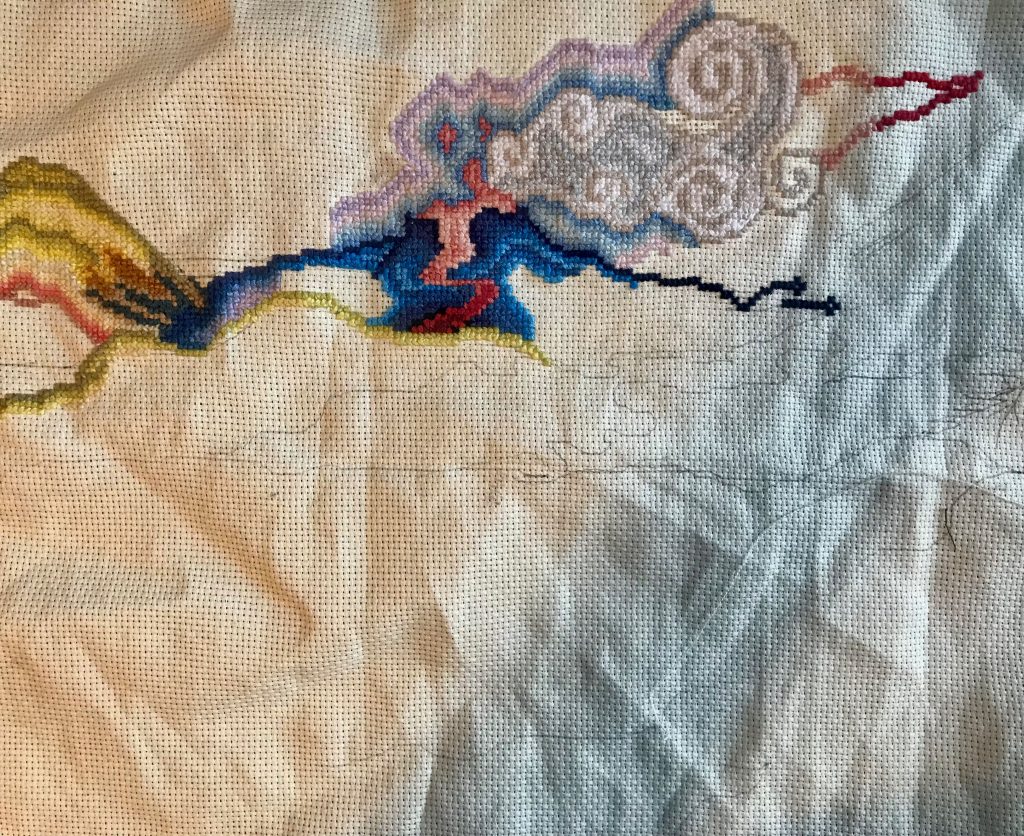
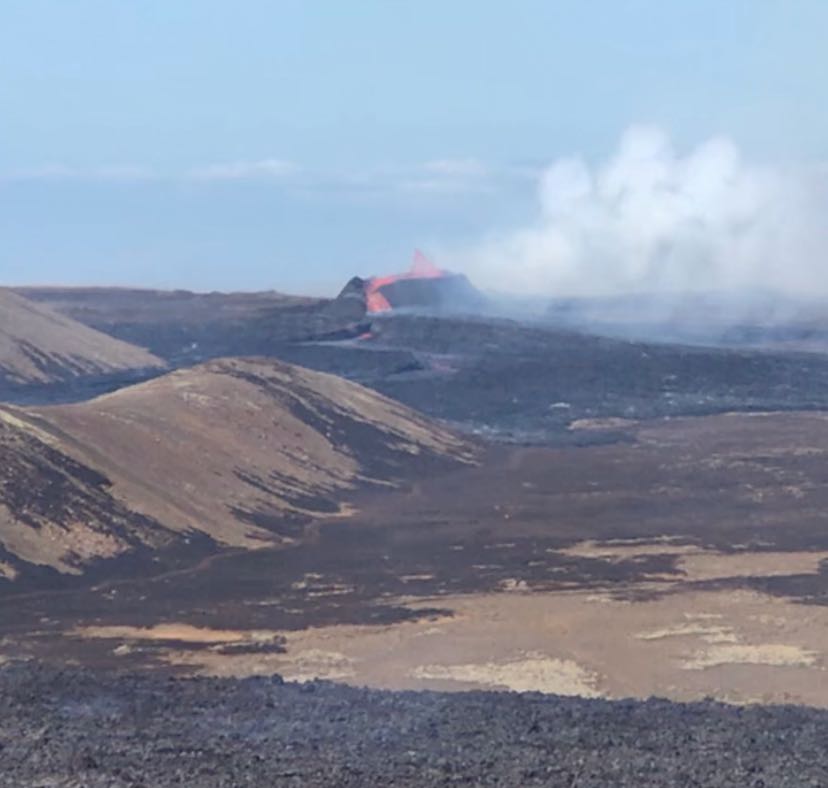
Tapestry currently in progress, made in response to a recent visit to Litli-Hrútur volcano in Reykjanes, Iceland, June 2023.

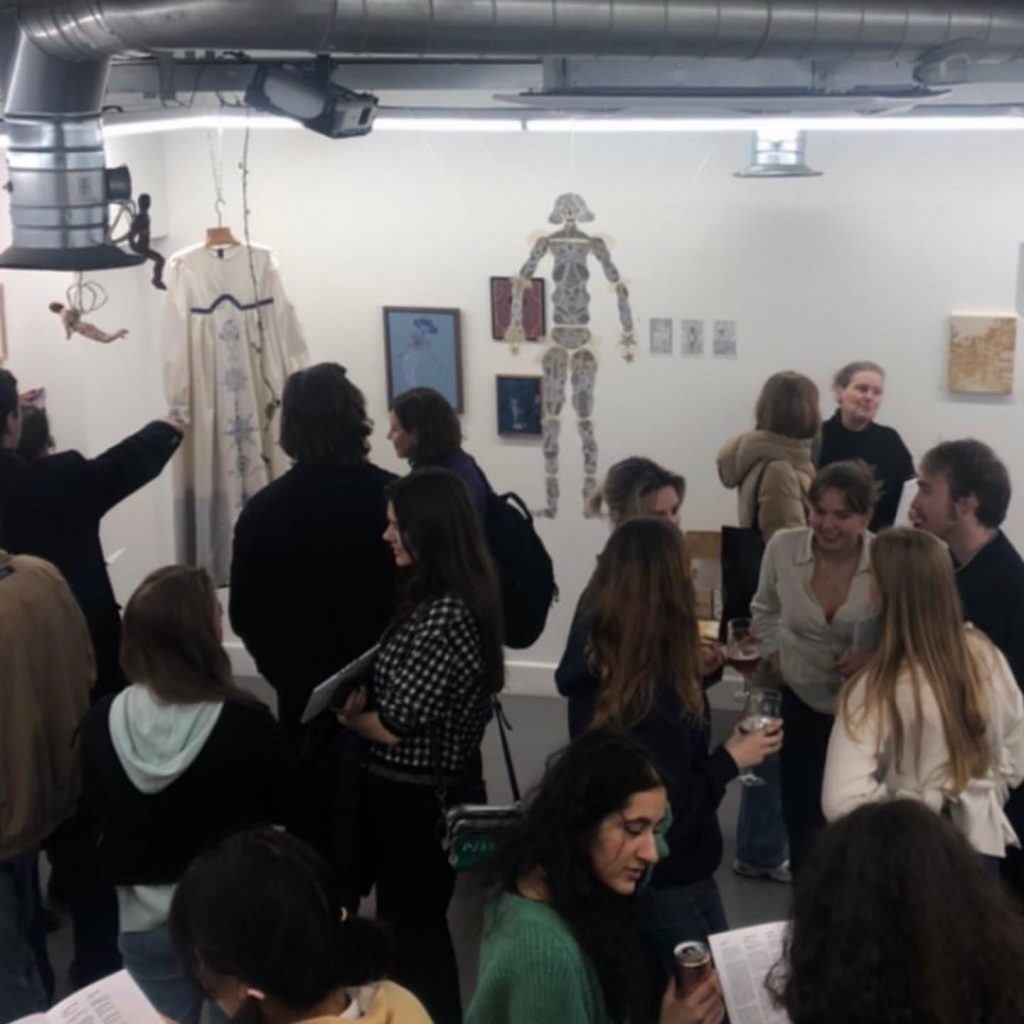
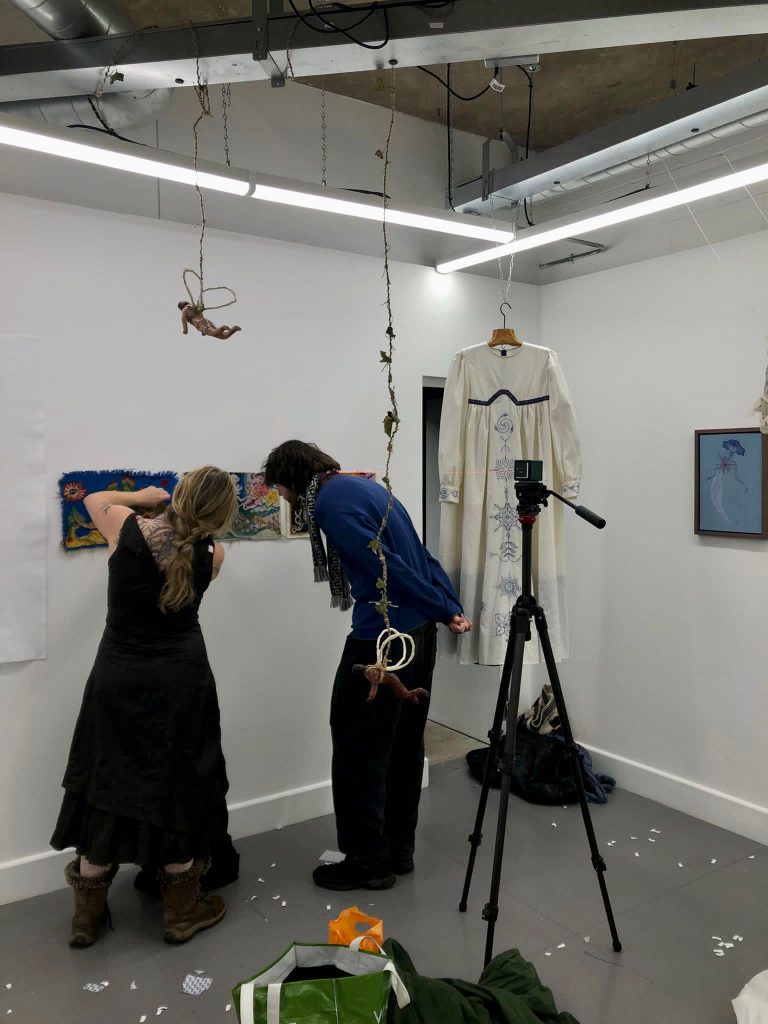
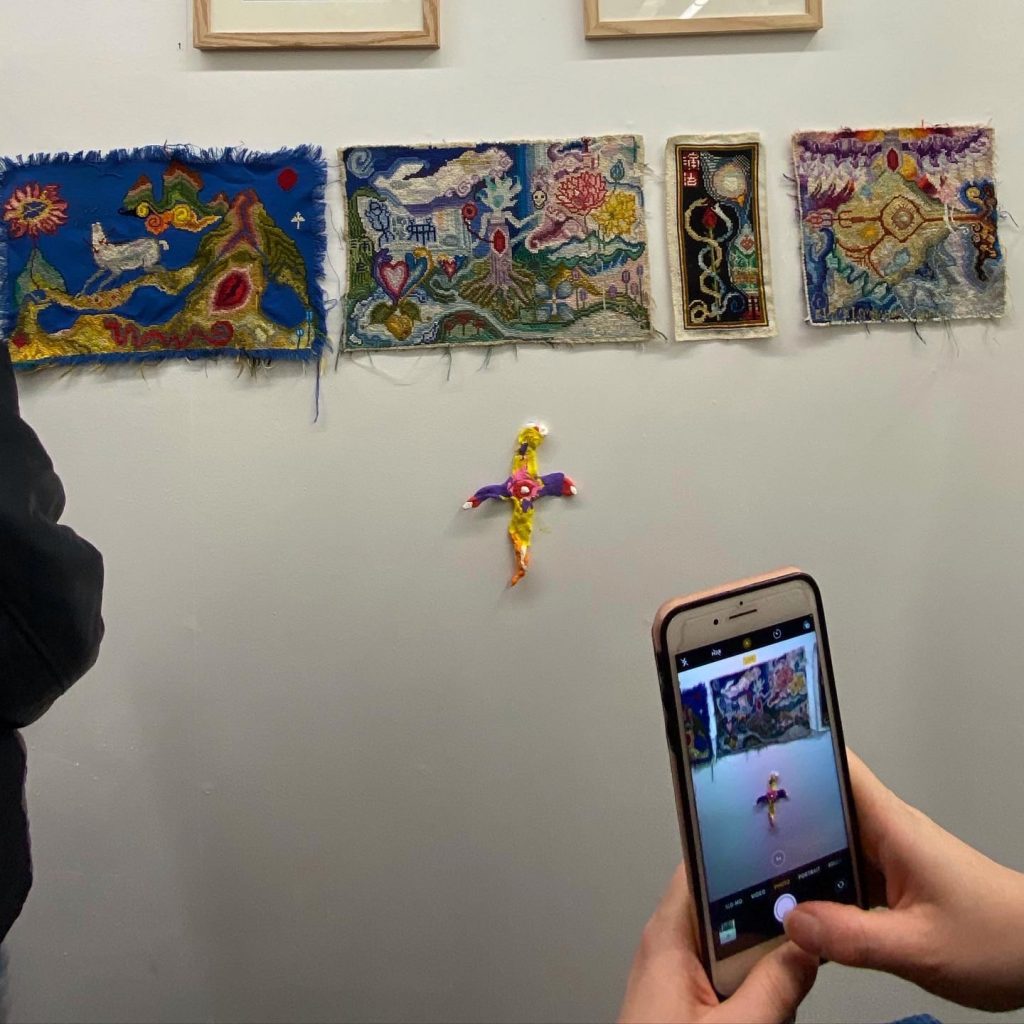
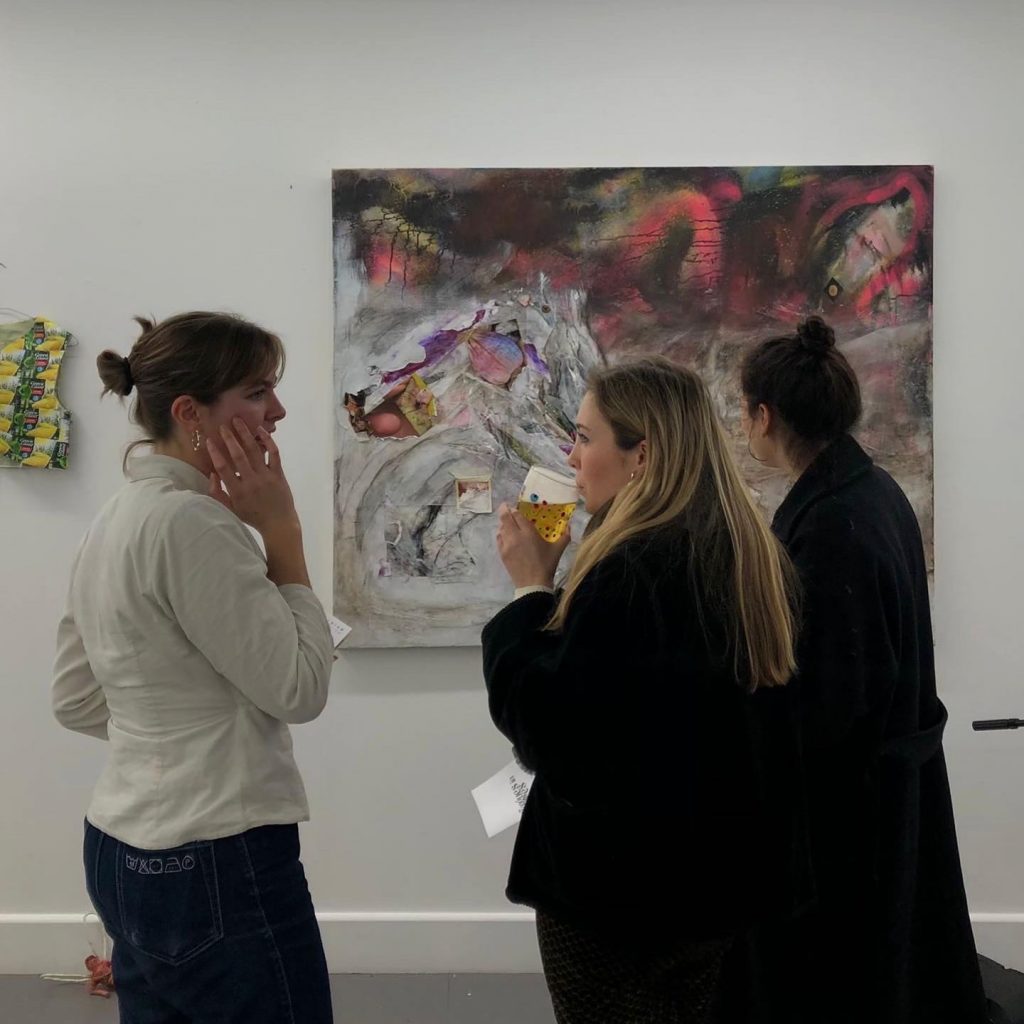
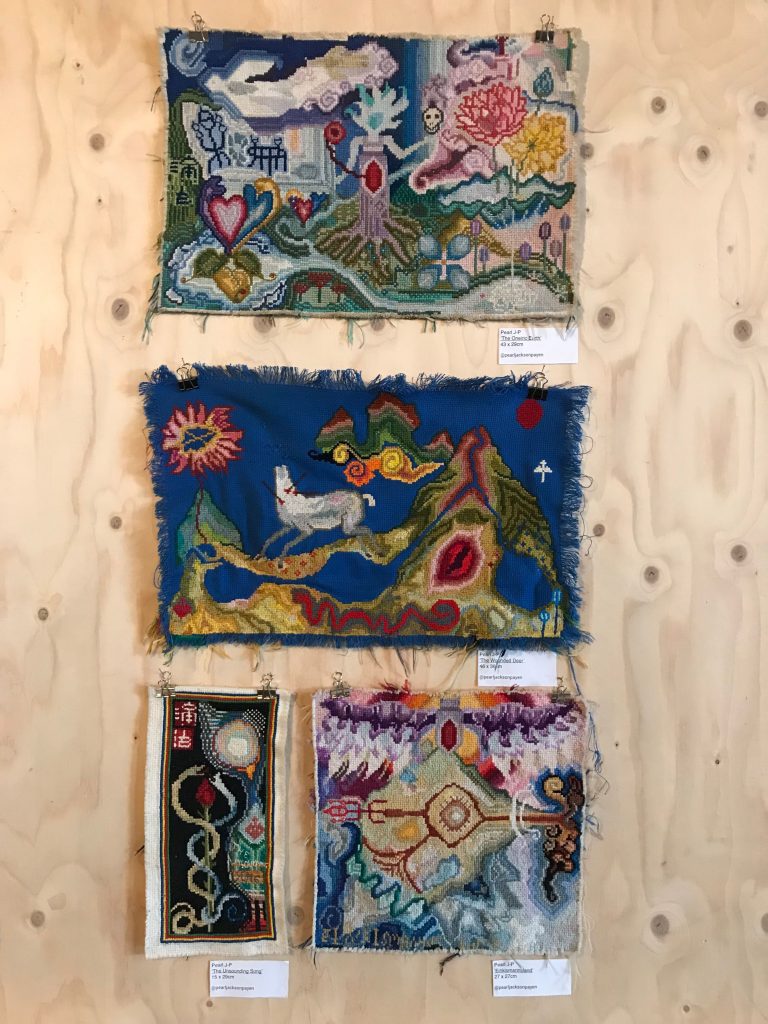
Exhibiting the oneiric earth cross-stitch embroidery as part of The Courtauldian’s Tongues in Trees exhibition in December 2022, and at the Senses Art Salon event at Amp Studios, South London, in September 2022.

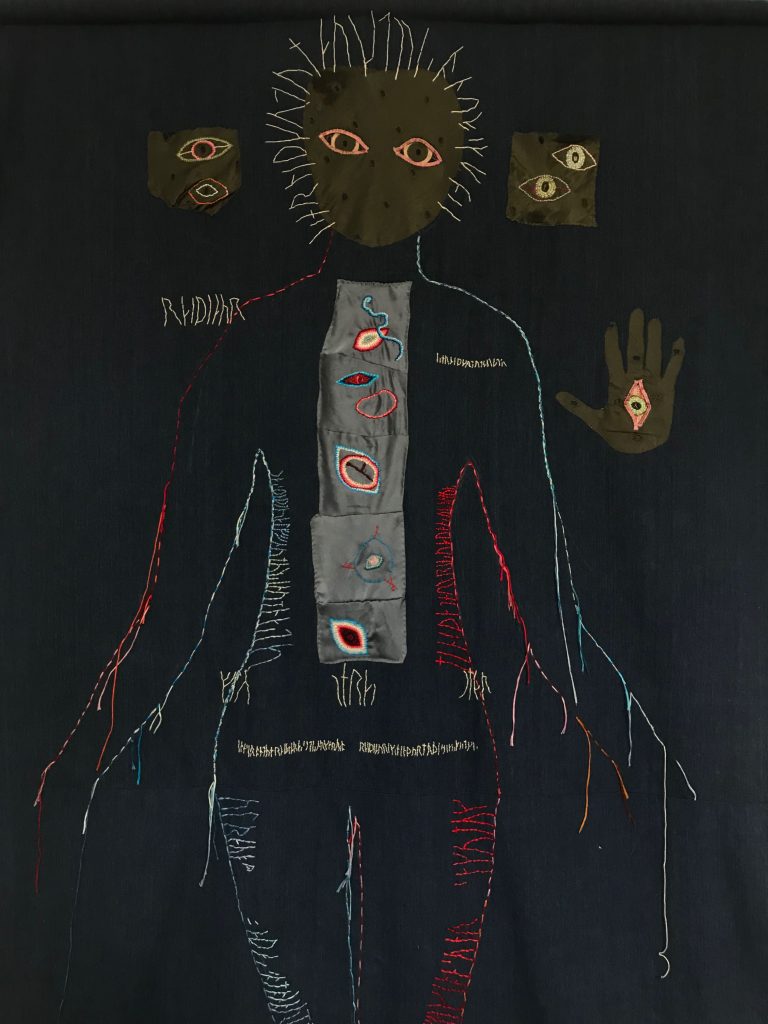
Life-sized bog woman/yeti protector, hand-embroidered on Japanese sashiko fabric, featuring ninth century runes from the Rök runestone, 2024.

Joining with the oneiric earth: An exploration of the telluric stages of Michel Tournier’s Friday, or the Other Island.
In 2020, I completed my undergraduate degree in Literature at Bristol University, where I wrote my thesis on accounts of embodied nature in the literature and philosophy of Michel Tournier and Gaston Bachelard. Through the study of eco-criticism, the poetics of space and time, and aesthetics, I touched into a profound place, a point around which the rest of my life and work is now centred. During this period, I also volunteered as Treasurer of the Zen Society, published poetic writing in the Bristol Poetry Anthology, and studied abroad in Iceland, where I was employed as a Travel Writer for Travelade Reykjavík.
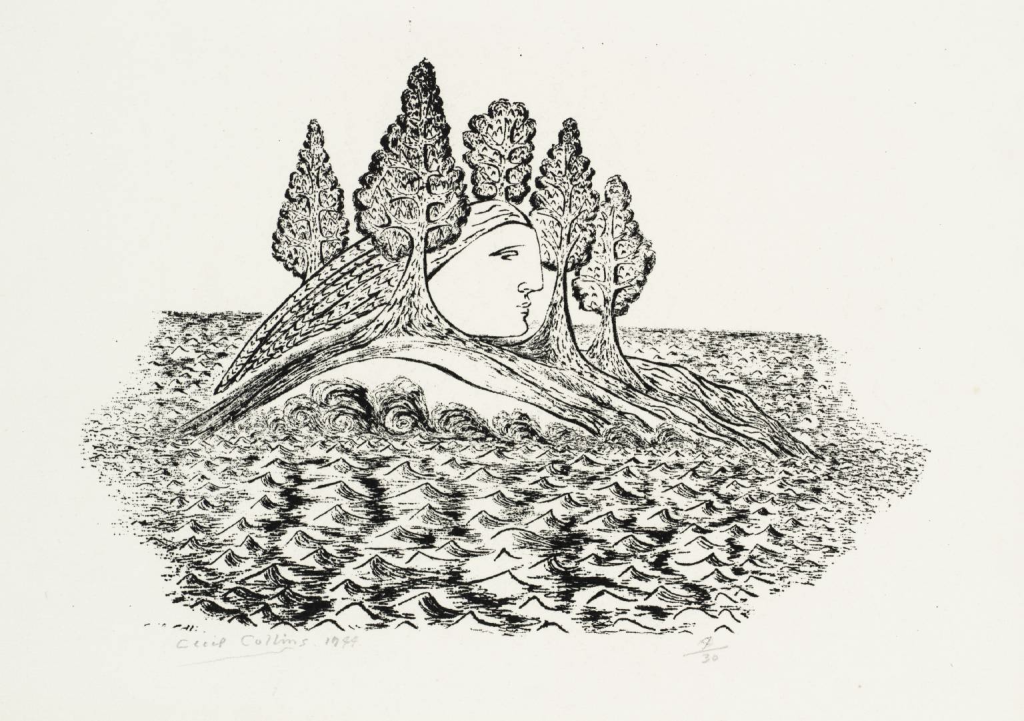
Abstract
This thesis is a focused study of Michel Tournier’s 1967 Robinsonade novel, Friday, or the Other Island. It is interested in Robinson Crusoe’s relationship to, and existence within the space, time, and matter of Speranza, his island. The island is structured, it can be divided into different rooms, or zones. Each part grows to eventually correspond to an aspect of Crusoe’s mind, or personality. This essay is particularly interested in the telluric regions of the island. The term telluric describes that which relates to or proceeds from the earth or soil. Michel Tournier uses it to gesture toward the earthly regions of the island, such as the forest, the mire, the cave, and the pink combe. Through communion with these spaces, Crusoe undergoes a slow and arduous transformation to eventually become ‘elemental’ (p. 199). Prior to and during the telluric period, Crusoe experiences the crushing weight of isolation, and thus begins to doubt the existence of his senses, and even of himself. Therefore, in order to survive, he replaces human society with society of the elements. This essay explores a unique relationship that takes place between man and matter. Gaston Bachelard’s Poetics of Space and Water and Dreams are consulted as main secondary texts.
Chapter 1 – Robinson and Speranza: an introduction
Chapter 2 – Encountering the island
Chapter 3 – Subterranean otherworlds and conquered terrain
Chapter 4 – Having become plant-like
Chapter 5 – Minuteness & immensity: a conclusion

